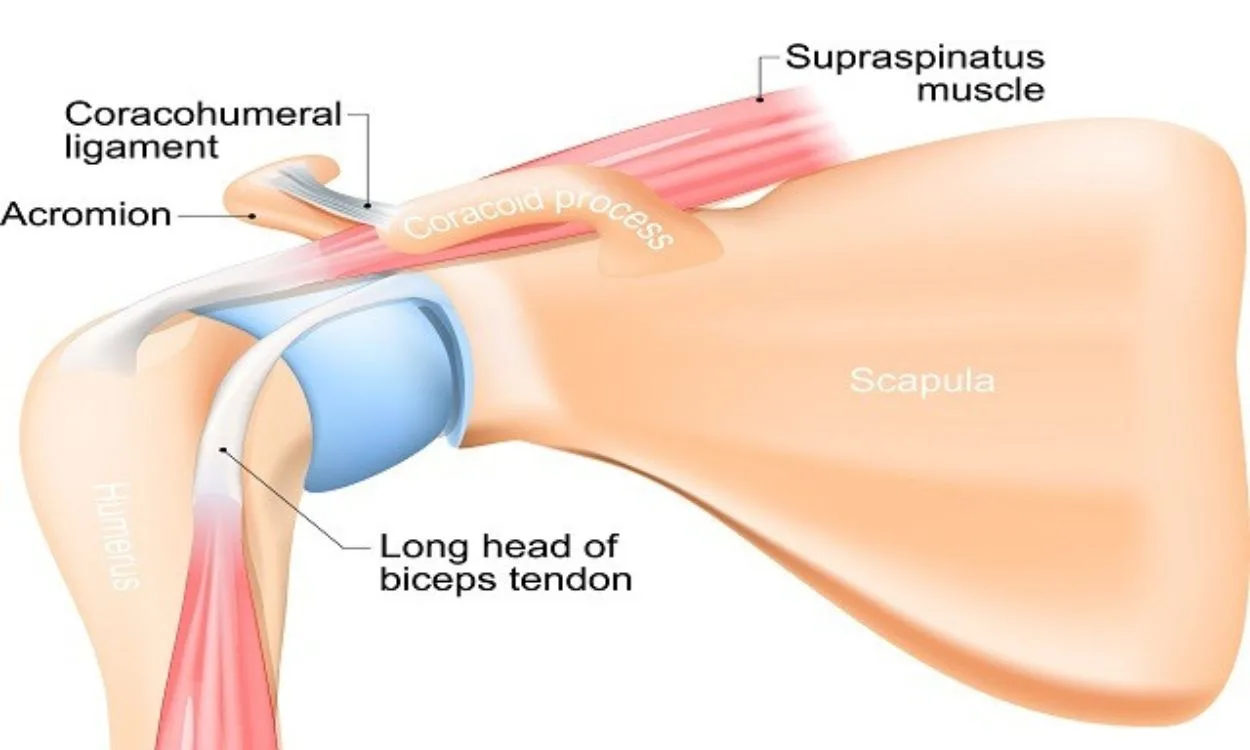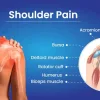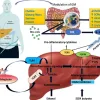Can Shoulder Pain be Associated with Other Joint Problems?
Shoulder pain is a common complaint that affects a large number of people. It can significantly impact daily activities and quality of life. While shoulder pain is often attributed to specific injuries or conditions affecting the shoulder joint itself, it can also be associated with problems in other joints of the body. In this article, we will explore the various ways in which shoulder pain can be linked to other joint issues, and how these conditions can be managed for better overall health.
1. Neck and Upper Back Issues
One common cause of shoulder pain is referred pain from the neck or upper back. The nerves in the neck and upper back can become compressed or irritated, leading to pain that radiates into the shoulder. Poor posture, muscle imbalances, and spinal conditions such as herniated discs can contribute to this type of pain. It is important to address the underlying neck or upper back issues to effectively alleviate shoulder pain.
Treatment:
- Correcting posture and ergonomics
- Stretching and strengthening exercises targeting the neck and upper back muscles
- Chiropractic adjustments or physical therapy for spinal alignment and pain relief
- Heat or cold therapy to alleviate muscle tension
2. Rotator Cuff Tears
The rotator cuff is a group of muscles and tendons that surround the shoulder joint, providing stability and allowing for a wide range of motion. Rotator cuff tears can occur due to acute injury or degenerative changes in the tendons over time. Along with shoulder pain, individuals may experience weakness, limited range of motion, and difficulty performing everyday activities. It is important to diagnose and treat rotator cuff tears promptly to prevent further damage.
Treatment:
- Rest and avoiding activities that aggravate the shoulder
- Physical therapy to strengthen the muscles around the shoulder
- Anti-inflammatory medications or corticosteroid injections for pain relief
- In severe cases, surgery may be necessary to repair the torn tendons
3. Frozen Shoulder
Frozen shoulder, also known as adhesive capsulitis, is a condition characterized by stiffness and pain in the shoulder joint. It occurs when the capsule surrounding the shoulder joint becomes thickened and tight, limiting movement. The exact cause of frozen shoulder is not well understood, but it can develop after prolonged immobility, injury, or certain medical conditions such as diabetes. Along with shoulder pain, individuals may have difficulty reaching overhead or behind their back.
Treatment:
- Physical therapy to improve range of motion and reduce pain
- Pain medications or corticosteroid injections
- Heat or cold therapy to alleviate symptoms
- In severe cases, manipulation under anesthesia or surgery may be necessary
4. Osteoarthritis
Osteoarthritis is a degenerative joint disease that commonly affects weight-bearing joints such as the hips and knees. However, it can also affect the shoulder joint, leading to pain, stiffness, and decreased range of motion. Osteoarthritis of the shoulder often develops due to age-related wear and tear, overuse, or previous injuries to the joint.
Treatment:
- Nonsteroidal anti-inflammatory drugs (NSAIDs) for pain relief
- Physical therapy to strengthen the muscles around the shoulder joint
- Injections of corticosteroids or hyaluronic acid for symptom management
- In severe cases, shoulder joint replacement surgery may be an option
5. Rheumatoid Arthritis
Rheumatoid arthritis is an autoimmune condition that causes chronic inflammation and pain in multiple joints throughout the body, including the shoulder. It can lead to joint damage and deformity if left untreated. Along with shoulder pain, individuals with rheumatoid arthritis may experience fatigue, morning stiffness, and swelling in the affected joints.
Treatment:
- Disease-modifying antirheumatic drugs (DMARDs) to slow down the progression of the disease
- Nonsteroidal anti-inflammatory drugs (NSAIDs) for pain relief
- Physical therapy to maintain joint mobility and strengthen the muscles around the shoulder
- In severe cases, surgery may be necessary to repair or replace damaged joints
Conclusion
Shoulder pain can be associated with other joint problems, including neck and upper back issues, rotator cuff tears, frozen shoulder, osteoarthritis, and rheumatoid arthritis. It is important to consult a healthcare professional for an accurate diagnosis and appropriate treatment plan. Addressing the underlying joint issues through a combination of medical intervention, physical therapy, lifestyle modifications, and pain management techniques can help alleviate shoulder pain and improve overall joint health.
Now that you understand the various joint problems that can cause shoulder pain, it’s important to take control of your health and fitness. Fitpaa, an end-to-end AI-driven metabolism monitoring and management technology, can help you achieve your health and fitness goals with guaranteed results. Download the Fitpaa app today and experience the joy of getting fit and excelling in life. Your wellbeing is our mission, and we are here to support you on your journey to a healthier, pain-free life.
Request a trial of Fitpaa and let our team of fitness planners, nutritionists, fitness trainers, and doctors guide you towards your dream life. Take advantage of our goal-oriented services with lifetime validity, where you achieve your health and fitness goals with a 100% guarantee. Don’t let joint problems hold you back from living your best life. Trust Fitpaa to help you transform your health and achieve your goals.









